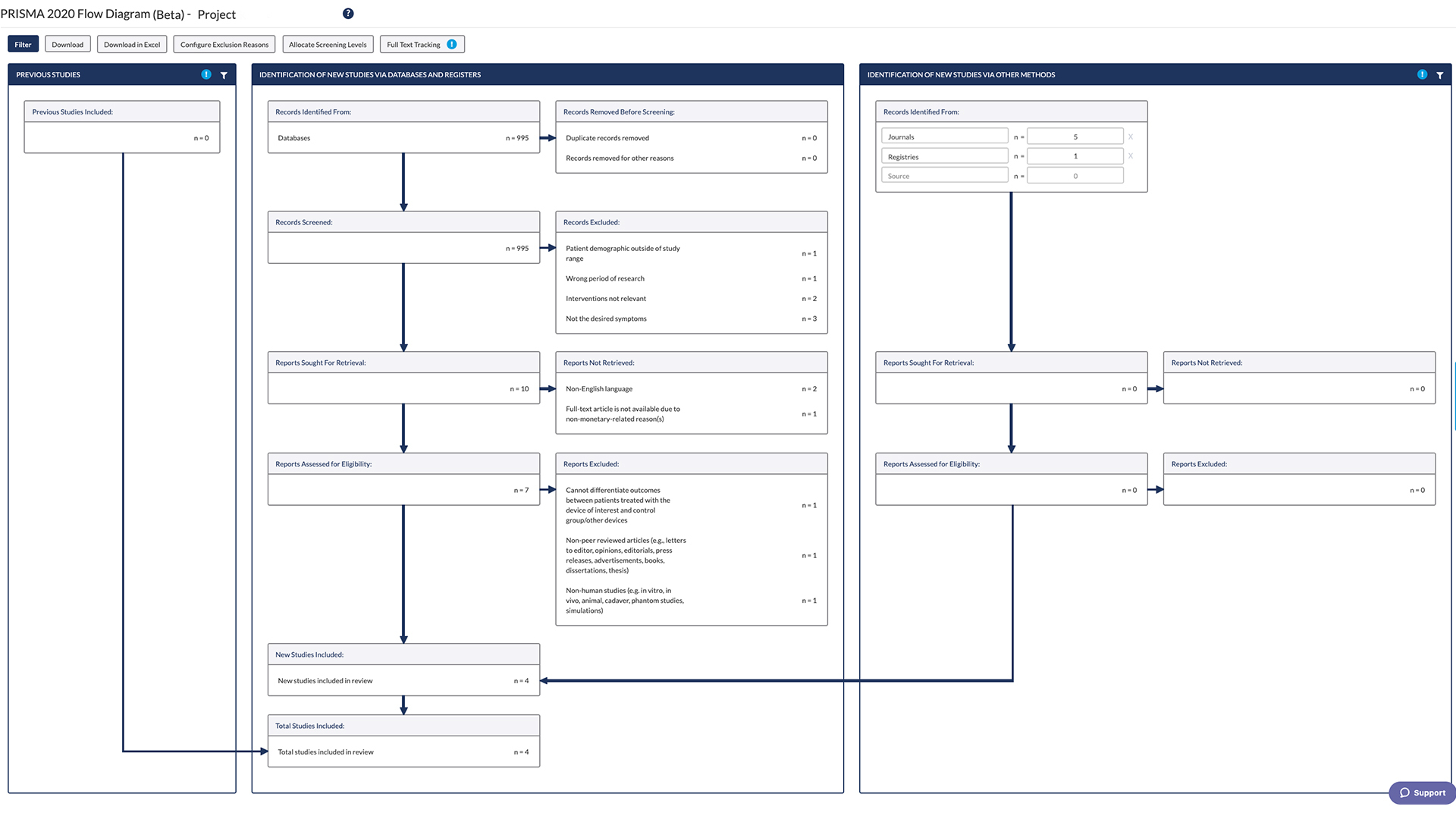PRISMA 2020 Template for
Systematic and Living Reviews


Automate every stage of your literature review to produce evidence-based research faster and more accurately.
A systematic review is a rigorous research method that involves systematically identifying, collecting, and appraising existing literature to answer a well-defined question. To ensure the transparent reporting of these reviews, the Preferred Reporting Items for Systematic reviews and Meta-Analyses (PRISMA) was designed in 2009. The PRISMA statement guidelines inform the methodology of systematic reviews to ensure that they transparently report the rationale, processes, and findings behind them. After a little more than a decade, PRISMA was updated in 2020. The new version includes an expanded 27-point checklist and a refreshed 4-stage flow diagram that now incorporates a living review flowchart for systematic reviews.
Changes in the New PRISMA 2020
The eleven years since PRISMA was originally published have seen a lot of significant changes – progress has been made in technology, processes, and methods used in systematic reviews, and the new PRISMA (2020) brings much-needed revitalization that accommodates all of these. Just like its predecessor, the current PRISMA statement guidelines aim to promote transparent reporting in systematic reviews. It does this through a 27-item checklist and a flow diagram.
Here’s what you should know about these two key tools, and how they’ve changed from their previous versions:
PRISMA 2020 Checklist
The PRISMA 2020 checklist includes new items and sub-items, as well as items now divided into sub-items. Among them include the addition of the “certainty assessment,” “certainty of evidence,” “competing interests,” and “availability of data, code, and other materials,” as well as additional sections under “study selection” and “synthesis of results.” Here’s the full list:
- Title
- Abstract
- Rationale
- Objectives
- Eligibility criteria
- Information sources
- Search strategy
- Selection process
- Data collection process
- Data items
- Study risk of bias assessment
- Effect measures
- Synthesis methods
- Reporting bias assessment
- Certainty assessment
- Study selection
- Study characteristics
- Risk of bias in studies
- Results of individual studies
- Results of syntheses
- Reporting biases
- Certainty of evidence
- Discussion
- Registration and protocol
- Support
- Competing interests
- Availability of data, code, and other materials
PRISMA 2020 Flow Diagram
The PRISMA flow diagram shows how information flows through the different phases of a systematic review. It highlights the number of records identified, included, and excluded, plus the reasons for exclusions. The 2009 PRISMA flow diagram did well in serving its purpose, but it lacked the ability to capture the results of living systematic reviews (ie, systematic reviews that actively and continuously search, assess, and incorporate new studies as they appear). The 2020 PRISMA flow charts, however, have been updated to consider reviews of this nature. Now, you can choose a template that either only includes databases and clinical trials or preprint registers, or one with extra sections for elaborating on gray literature – both of which have versions for new systematic reviews in traditional format or living systematic reviews.
Learn More About DistillerSR
(Article continues below)
Summary of the Checklist
The PRISMA statement is an important guideline that every researcher must know before undertaking a systematic review. The updated version also requires researchers, especially those who started conducting living systematic reviews before 2020, to refresh their knowledge of its rules. If you need help in applying the new 2020 PRISMA templates to your study, you can use systematic review software like DistillerSR to help automate some of the processes for you.









